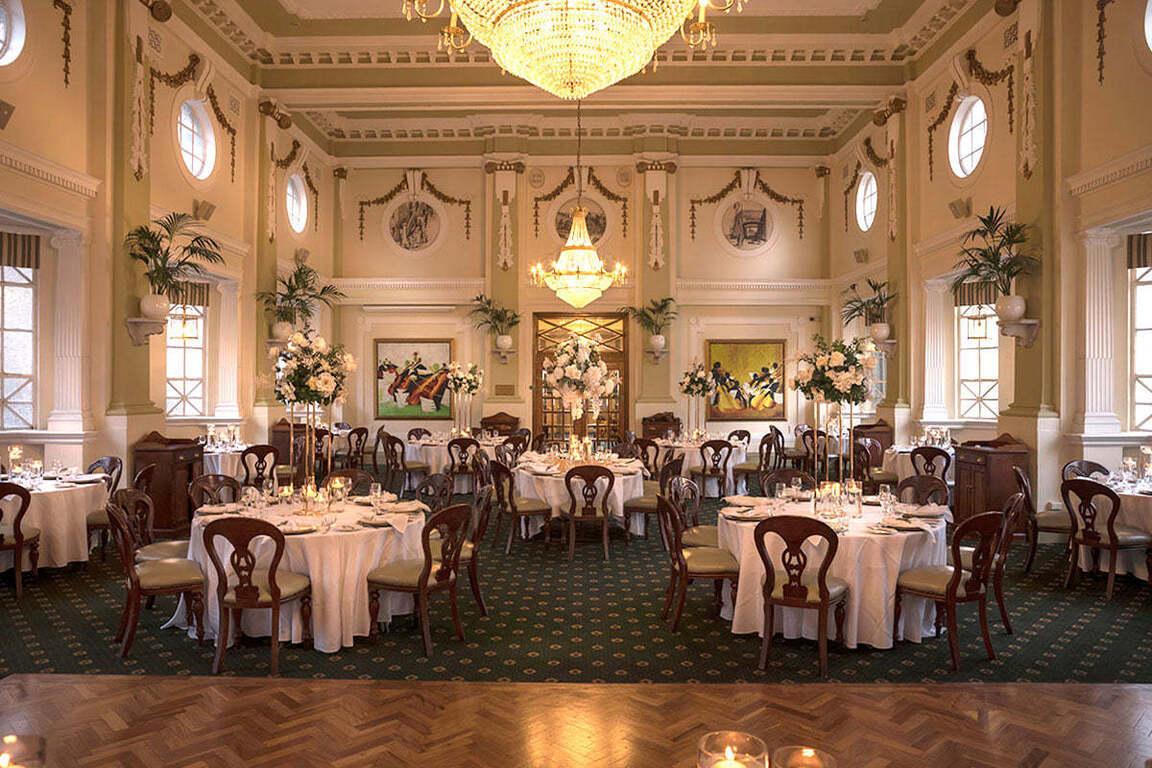-
Search Results
-
Hi Roger (and others),
Here’s a tough one. I am looking for possible approaches and ideas to this tricky lighting situation. I am shooting a 1800’s period film in the ballroom pictured below. The room will be blacked out for night and filled with 50+ extras. Since it is a historic building, nothing can be rigged to the roof and candles are prohibited. The only practical source of light I have are the chandeliers on the roof which basically flatten the whole room and cannot be dimmed, they’re either on or off. I have looked into using LED candles as practicals around the room, which 1: look horrible and 2: I would need 100’s to generate any source of usable practical light. Any moonlight or ambience through the windows is not possible since the building is on the 30th floor…..
My first instinct is to dress the tables with a period appropriate practical source such as a lantern or something similar and cheat the inside with a bulb.
Any input or suggestions would be much appreciated! (please keep budget in mind when suggesting things, it is a shot film….enough said..)

Almost every DP or Gaffer I know used to use Dark Sky to track weather conditions when shooting outside. You could see impending rain or cloud coverage and time the angle of the sun perfectly.
A couple of years ago Apple bought the app and “integrated” it’s features into their weather app (but not really).
So I’m curious, what apps are you using nowadays to track weather?
I noticed recently that the original trailers for the film are an “open gate” 16:9 — ie. not pan and scanned, but actually show more image than the final film.
Was this simply some sort of weird studio decision to conform to internet standards (YouTube only supporting 16:9, it being more common screen size, etc.)?
Or was the film designed for 16:9 or 1.85:1 and the decision to crop to 2.39:1 an after-thought?
Thank you.
<p style=”text-align: left;”>Hello, so my goal is to supplement daylight to make the frame feel natural but alive in a cinematic sense as I feel no lighting can make a frame feel kinda dull unless done with special care like the new naturalism types like Lubezki and Richards. Also to help the lighting for a scene stay consistent over time. With all of this in mind, I found a light that works within my workflow of being small, versatile and relatively powerful but on that last part. I realize I would need to have a much bigger light that I would have no chance of packing in a backpack, but rather, supplement daylight close up, handheld like you would with a sun gun, would a redhead or equivalent, through a lantern be enough to keep up?</p>
Always struck by the richness of the blues contrasting with the warmth of practicals in True Grit and in No Country For Old Men.
I’m curious what sorts of gels are used for the moonlight to achieve this look? Simple CTB?
Thank you
Dear Roger,
last night I had the absolute pleasure of watching Empire of Light for the first time.
The irony of it was, that the projectionist messed up and we waited a couple of minutes in absolute darkness. But aside from that it was absolutely enjoyable and a very moving picture.I tried not to think to much about the camera work while watching but got taken out of it for just one small moment.
When the National Front mob attacked the cinema staff I think I noticed a change in the motion on the shot of Norman being pushed to the ground. Something about the motion blur seemed a bit off, as if the shutter angle was greater than 180° or perhaps the clip was shot for a different framerate than being shown.
Perhaps I’m seeing something that wasn’t even there and It was all fine, however I wanted to ask if you recall any abnormality, a small thing that bothered you in post production like this issue I think I spotted, since I can not examine the moment of the film so easily again.Thanks for your time and congrats on this beautiful movie that moved me to tears.
CBE, ASC, BSC
